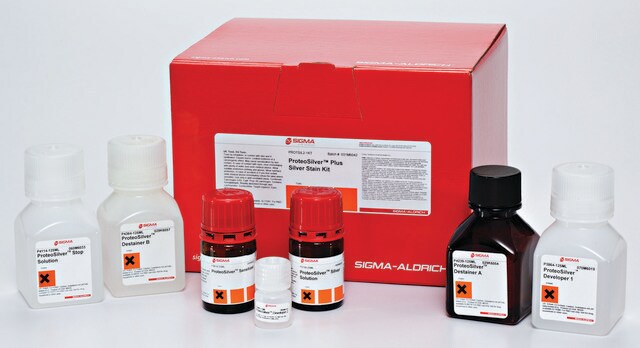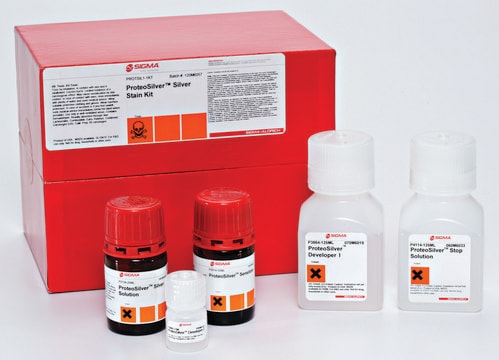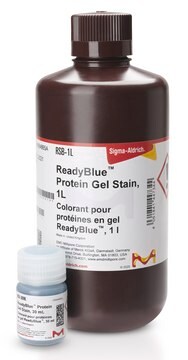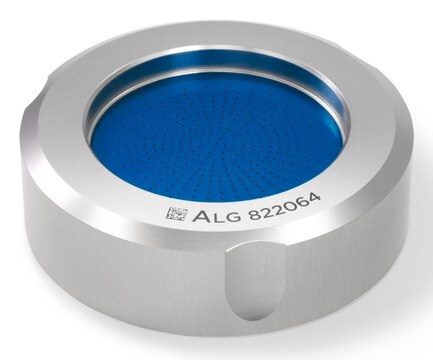S5692
SYPRO® Orange Protein Gel Stain
Synonyme(s) :
SYPRO® dye, protein gel stain
About This Item
Produits recommandés
Durée de conservation
≥6 mo. (when stored desiccated and protected from light at room temperature, 4 °C or 20 °C.)
Niveau de qualité
Technique(s)
protein staining: suitable
Fluorescence
λex 300,470 nm; λem 570 nm
Description générale
SYPRO Orange is:
- Highly sensitive. The stain can detect 1 to 2 ng of protein per minigel band, making it more sensitive than Coomassie Brilliant Blue or silver staining.
- Rapid. Staining is complete in less than one hour
- Simple. After electrophoresis, the gel is stained, rinsed and photographed; no fixation or destaining steps are required
- Compatible with standard laboratory equipment. Stained proteins can be visualized with a standard 300 nm UV transilluminator or laser scanner.
- Cost-effective. Staining with SYPRO Orange is less expensive than silver staining and requires less time.
- Low protein-to-protein variability. The dye interacts with the SDS coat around the protein, giving more consistent staining between different types of proteins compared to Coomassie or silver staining.
- Selective for proteins. SYPRO Orange detects proteins as small as 6.5 kDa and does not stain nucleic acids or lipopolysaccharides. It does stain glycosylated proteins.
- Broad linear range of detection. The fluorescence intensity of the stained bands is linear with protein quantity over three orders of magnitude (a much broader range than either Coomassie or silver staining).
Application
Attention
Informations légales
Produit(s) apparenté(s)
Code de la classe de stockage
10 - Combustible liquids
Classe de danger pour l'eau (WGK)
WGK 3
Point d'éclair (°F)
188.6 °F - closed cup
Point d'éclair (°C)
87 °C - closed cup
Certificats d'analyse (COA)
Recherchez un Certificats d'analyse (COA) en saisissant le numéro de lot du produit. Les numéros de lot figurent sur l'étiquette du produit après les mots "Lot" ou "Batch".
Déjà en possession de ce produit ?
Retrouvez la documentation relative aux produits que vous avez récemment achetés dans la Bibliothèque de documents.
Articles
To meet the great diversity of protein analysis needs, Sigma offers a wide selection of protein visualization (staining) reagents. EZBlue™ and ProteoSilver™, designed specifically for proteomics, also perform impressively in traditional PAGE formats.
Notre équipe de scientifiques dispose d'une expérience dans tous les secteurs de la recherche, notamment en sciences de la vie, science des matériaux, synthèse chimique, chromatographie, analyse et dans de nombreux autres domaines..
Contacter notre Service technique








